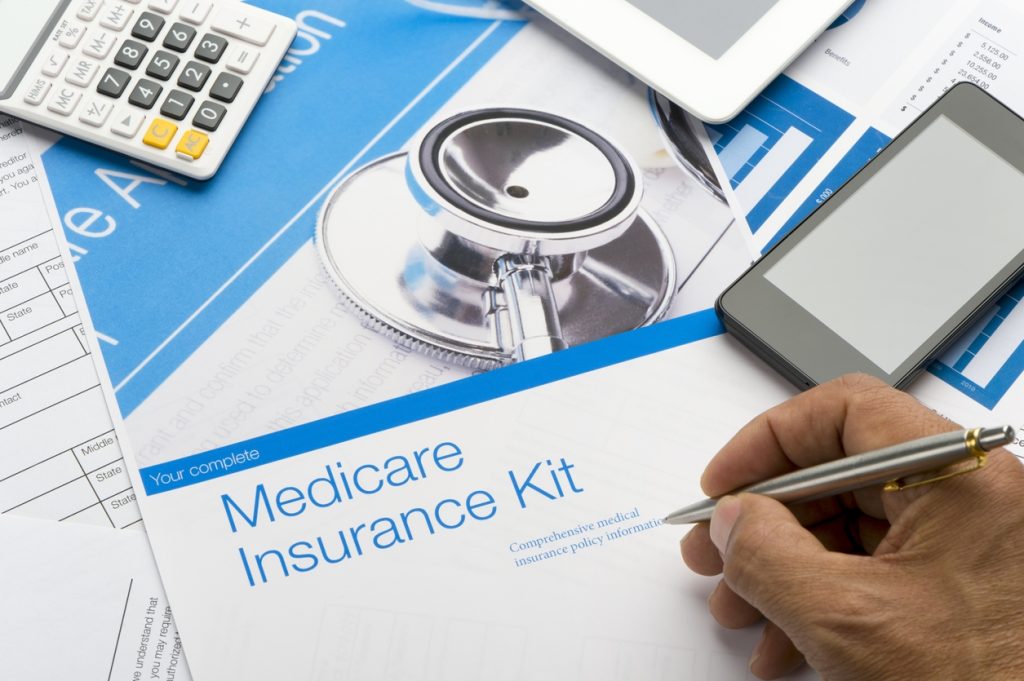Digital Marketing for Life Sciences
by Hannah Cox-Schroeder

Casey Rush
- Mar 17, 2022
Digital Marketing for Life Sciences

In life sciences industries, marketing has historically relied on in-person sales calls, with representatives encouraging the decision-makers at hospitals and doctors’ offices to purchase their products or promote them to patients who could ultimately buy them themselves. The reps leave brochures and branded swag to share information with stakeholders and keep the product top of mind. These very tangible, in-person marketing methods are tried and true, and they aren’t going anywhere, but in today’s evolving consumer landscape, they aren’t enough, either.
Why Is Digital Marketing Important for Life Sciences Companies?
Which Digital Strategies Should Life Sciences Brands Implement?
- Microsites & Landing Pages: When most consumers—both B2B and B2C—need to find a new product or service, the first place they go to find and research their options is a search engine. The stronger your online presence, in terms of content and information available from your website, the more likely they are to find—and choose—your life sciences brand.
Life sciences brands can provide value to potential customers by offering e-books, newsletters, and online courses and sharing contact details, pricing, and insurance information. Landing pages should use automatic lead capture so you can continue the conversation even after the initial session has ended. - Social Media Campaigns: Social media may not be the first place doctors, hospitals, or even individual consumers looking for information on medical purchases. However, social media channels are an incredibly potent way to build brand awareness that strengthens email, direct mail, and even in-person marketing campaigns. For example, one OneTouchPoint client saw a marketing ROI increase of over 200% when combining their direct mail and Facebook campaigns.
Why is that? Recent surveys have found that social media users spend an average of 58 minutes per day on Facebook, 53 minutes per day in Instagram, and 49.5 minutes a day on Snapchat. This content is where consumers are introduced to countless brands and what they offer. Ultimately, all this exposure breeds familiarity and trust—the first steps on the road to purchase. - Email Marketing: Finally, email marketing is key to guiding prospective buyers through the marketing funnel from awareness to purchase. Engage them by sharing valuable content that illustrates how your offering fills their needs. Then, offer to talk brass tacks with your most promising leads, providing virtual or in-person product demos, sales conversations, etc., to close the deal.
Digital Is Just One Piece of the Life Sciences Marketing Puzzle
OneTouchPoint prides itself on supporting the life sciences industry by embracing digital marketing strategies that build brand awareness, drive sales, and enhance the bottom line. Adding digital outreach and developing a multichannel communication strategy can feel like quite the juggling act, but OneTouchPoint is here to help. Contact us or request a quote on your next project to learn more about how OneTouchPoint can transform your life sciences marketing efforts.

Casey Rush
- Mar 10, 2022
Marketing for Medical Devices: 3 Steps to a Winning Strategy

Step 1: Know Your Primary and Secondary Audience
In marketing for medical devices, however, there’s an extra layer of complexity because no matter who your buyer is, there will be other parties exerting significant influence over that buyer, and you have to market to them, too. Say your buyers are the hospital systems. You’ll create messaging and outreach that speaks directly to their values — operational efficiency, increased margins, etc. But you also know that the doctors, nurse practitioners, and other healthcare professionals will significantly influence what the hospital purchases. So, you’ll have to develop messaging for them — focusing on patient outcomes, quality of care, etc. — that inspires them to be a champion or an influencer of your product to the decision-maker – or ultimate buyer.
Or maybe your devices are sold directly to patients, but you know their healthcare providers or even insurance companies will guide their purchase decisions. Similarly, you’ll create two layers of messaging: one geared to the consumer’s purchase and the other to help influencers encourage their patients to make the purchase.
In short, the first step to creating a powerful marketing campaign is to understand who you’re targeting and why, so you can speak to the needs of both the ultimate decision-maker and the major influencers.
Step 2: Develop & Execute a Multichannel Marketing Campaign
This strategy will include the traditional, in-person sales calls that come to mind right away when we talk about medical devices and pharmaceutical marketing. Still, those will be just one part of a proper multichannel marketing campaign. You’ll devise materials—brochures, informational packets, and swag—for sales reps to put in doctors’ hands. You will also develop online outreach, direct mail campaigns, and signage for retail pharmacies and drugstores (for a B2C audience).
Why is this holistic outreach so important? Because people are busy. They don’t always read that email, save that postcard, or click the link in that tweet, but it starts to stick as they’re exposed to the same messaging on various platforms. And the research proves it: According to Swrve, an integrated multichannel marketing program can deliver revenue uplift in the range of 15 to 35 percent, and according to Heinz Marketing, marketers who integrate multiple channels are more than twice as likely to report higher marketing effectiveness vs. using those using fewer channels with less integration. (Learn more about the “why” behind multichannel marketing campaigns in part 1 of our two-part series.)
Creating a central, digital asset repository is imperative to preserve brand integrity and empower every marketer to reach their unique audiences. Of course, when there are lots of cooks in the medical device marketing kitchen — reps covering different territories, storefronts across the country, etc. — coordinating a consistent, effective multichannel marketing campaign can be easier said than done. Stocked with the latest pre-approved collateral and easy-to-customize templates, a platform like OneTouchPoint’s OTP One makes it easy for every marketer to take ownership of these campaigns — without national marketing leaders having to micromanage every single communication on every single platform.
Step 3: Produce & Distribute Printed Materials and Promotional Items
We invite you to peruse our website to learn more about our OTP One platform and print and digital marketing execution capabilities. When you’re ready to learn how OneTouchPoint can transform your medical device marketing efforts, contact us, or request a quote on your next project.

Casey Rush
- Mar 03, 2022
5 Benefits of Outsourced Printing for Healthcare Insurance Providers

And yet, from managing changing customer expectations, updating coverage of new drugs and procedures, and staying compliant with the latest state and federal requirements, health insurance companies face a wide variety of business challenges. It can be too easy to let patient communication slip through the cracks in the chaos.
How can these organizations make communicating — and building trust — with customers a priority, no matter what else they’re juggling?
Health insurance marketing and communications leaders have too much on their plates to effortlessly manage the logistics involved in producing and distributing printed customer communications—from promotional postcards to explanations of benefits. They need a partner who can take care of the details, leaving them free to focus on what they do best: supporting customers through their healthcare journeys.
There are many benefits to outsourcing printing to the right partner—all in the service of building trust with customers through secure and effective compassionate communication. Here are the top five.
Consistent Quality to Exceed Your Standards for Excellence
Customers pay a lot of money for health insurance, and to trust that their investment is sound, they need to see evidence that their providers are putting care and effort into what they do. The quality of printed communications is a powerful first impression — if a provider can’t produce quality materials, how can clients trust them to deliver quality healthcare results?
Unfortunately, it’s easy for even the most well-meaning marketing and communication leaders to fall prey to poor or inconsistent print communication, often in a (very understandable) effort to save time and money. Whether this means printing on subpar in-house equipment or working with a third-party print procurement broker, the result is often a low-quality product that costs more in wasted time and effort (and potentially damaged reputation) than it saved in the first place.
The smarter choice is a single-source partner for consistent print quality that highlights an insurance provider’s dedication to excellence. Choose a partner who will centralize print marketing execution and ensure quality and consistency by producing materials on world-class equipment rather than outsourcing to the lowest bidder.
Perhaps more than in any other industry, healthcare companies have to be laser-focused on protecting their customers’ privacy, and the stakes—financial and reputational—of noncompliance or breach of privacy are often perceived as an insurmountable obstacle to outsourcing print production. After all, health insurance companies frequently need to communicate sensitive information via direct mailings throughout the year. How could they possibly trust an outside source to do it right?
Still, the stakes don’t overrule the need for efficiency and cost containment. The notion of appointing one person to print, stuff, address, double-check and send every piece of mail individually is unsustainable. So, how can healthcare companies ensure their mailings won’t put confidential information at risk?
On-Time, Accurate Delivery
A customer’s trust that their health insurance provider will be there for them in the most challenging times starts with the provider’s track record of timely communication even in the best of times. Do customers receive information about plan options in plenty of time to make informed choices during the open enrollment period? Do they receive updates about the drug formularies in time to work with their doctors to swap out no-longer-covered prescriptions for new ones that won’t break the bank?
On-time delivery of information is critical for empowering customers to make informed decisions about their well-being in the best of times — and for assuring them that their insurance provider will be there for them when the going gets tough.
So, as you’re looking for a print provider, pay special attention to their distribution and fulfillment practices to ensure they’ll produce quality print materials and deliver them to patients on time, every time.
Efficient, Cost-Effective Processes
At OneTouchPoint, we pride ourselves on helping clients minimize print costs by cutting waste and finding savings through bulk postage discounts, paper procurement, and other system efficiencies. Our six nationwide production facilities reduce shipping time and costs by allowing strategic choices from where materials are printed and shipped.
And it’s not just the upfront costs that the right partner can minimize. Our processes save money on bulk printing (and reprinting and reprinting) information that’s liable to change quickly. We deliver cost savings by reducing waste, offering print-on-demand capabilities to eliminate minimum print quantities, minimize storage requirements, and empower healthcare insurance providers to keep pace with industry changes.
Beyond Print: A Marketing Communication Ecosystem
Finally, print materials are just one of the many ways healthcare insurance companies communicate with customers. The right partner understands that and can partner with you to manage and execute holistic, multichannel marketing campaigns, going beyond printing to ensure quality, security, and timeliness of the whole marketing communication ecosystem, including digital and print. With a team like that on your side, it’s easy to reach customers with consistent, timely messaging wherever they are, whenever they need you.
Healthcare insurance providers have enough challenges to face—customer communication shouldn’t be one of them. Fortunately, OneTouchPoint is here to help. As a single-source print marketing execution partner, we are dedicated to helping our clients streamline patient communication. We handle the medium so that you can focus on the message.
When your healthcare insurance organization is ready to find a trusted, single-source marketing execution partner, we invite you to contact us to learn more or request a quote on your next project.
